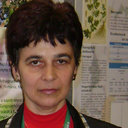Characterization of antioxidant phenolics in Syringa vulgaris L. flowers and fruits by HPLC-DAD-ESI-MS.
Ключові слова
Анотація
In this study the polyphenolic composition of lilac flowers and fruits was determined for the first time. For the identification of compounds, accurate molecular masses and formulas, acquired by LC and ESI-TOF-MS and fragmentation pattern given by LC-ESI/MS/MS analyses, were used. Our chromatographic system in conjunction with tandem MS was found to be valuable in the rapid separation and determination of the multiple constituents in methanolic extracts of lilac flowers and fruits. Altogether 34 phenolics, comprising 18 secoiridoids, seven phenylpropanoids, four flavonoids and five low-molecular-weight phenols, were identified. As marker compounds two secoiridoids (oleuropein and nuzhenide), two phenylpropanoids (acteoside and echinacoside) and rutin were quantified by validated methods. As a result of quantitative analysis, it was confirmed that flowers contain significant amounts of phenylpropanoids (acteoside, 2.48%; echinacoside, 0.75%) and oleuropein (0.95%), while in fruits secoiridoid oleuropein (1.09%) and nuzhenide (0.42%) are the major secondary metabolites. The radical scavenging activities of the extracts and the constituents were investigated by DPPH (2,2-diphenyl-1-picrylhydrazyl) and ABTS [2,2'-azino-bis-(3-ethylbenzothiazoline-6-sulfonic acid)] assays. Both extracts show remarkable antioxidant activities. Our results clearly show that lilac flowers and fruits are inexpensive, readily available natural sources of phenolic compounds with pharmacological and cosmetic applications. Copyright © 2015 John Wiley & Sons, Ltd.


